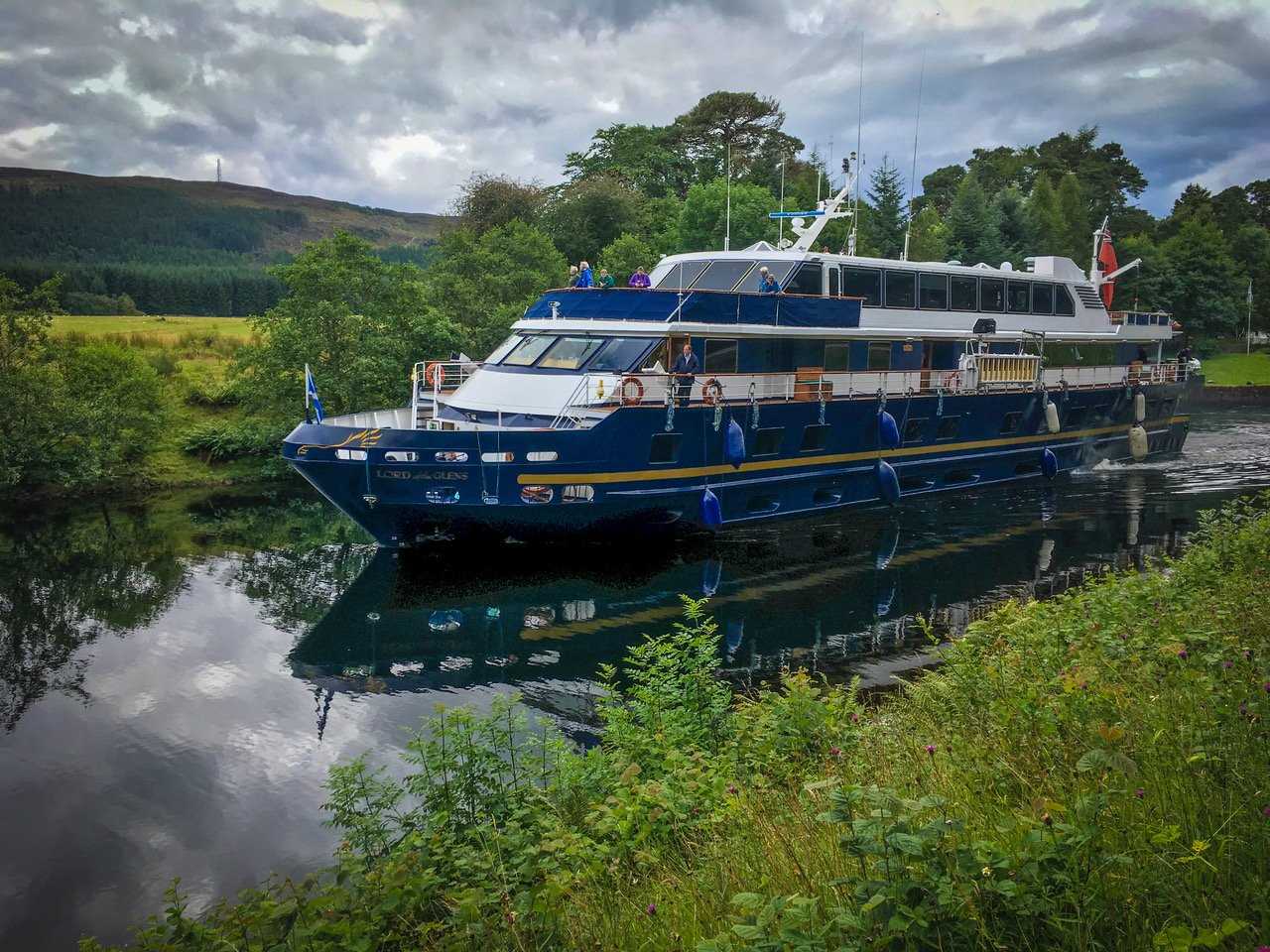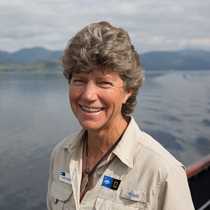We started our first full day in the Caledonian Canal with the ascent of Neptune’s Staircase, a series of eight locks that raised the Lord of the Glens about 62-feet above sea level over a quarter of a mile. We are now well-immersed in fresh water, with the ocean behind us. Our journey up the canal took us through Moy Bridge, the last working Telford-designed bridge on the canal today – and it is still hand cranked! Then it was into Loch Lochy, one of the natural lochs along the Caledonian Canal.
During this morning’s sail, Stewart gave a talk on the mighty Ben Nevis that was still visible on the horizon, the UK’s tallest mountain at 4409 feet. Robin followed with a talk on Scotland’s moors, “From Bonnie Heather to Soggy Bog,” covering both the ecological and cultural aspects of this environment so important to Scotland’s landscape.
Just as lunch started, we entered Laggan Avenue. Along this narrow section, the canal was dug deeply into the earth, and trees planted to stabilize the spoils heaped up along the canal, creating the peaceful, verdant, tree-lined “Avenue” we see today. Shortly after Laggan Avenue, the ship entered Loch Oich, the highest point of the Caledonian Canal at 106-feet above sea level.
On the other side of Loch Oich, we had the opportunity to disembark and walk along the tow-path for the last few miles into Fort Augustus. The walkers waved at the passengers still on board, as the Lord of the Glens sailed by, on its way to Fort Augustus, our berth for the night. The small town of Fort Augustus came into existence in 1729, one of the forts built in the effort to subdue the Jacobites. It is named after William Augustus, second son of King George II, who led the government troops at the Battle of Culloden. The town sits on the south edge of Loch Ness, the deep, freshwater lake that we’ll sail across tomorrow.
The afternoon held several options. Some explored the town on their own, others kayaked with Stewart, and some walked with Carol and Robin. The kayakers explored the stretch of the Canal above the ship, paddling in calm waters under cloudy skies. The walkers completed a loop on the outskirts of Fort Augustus, passing through everything from a golf course to a cemetery, and meandering down quiet lanes surrounded by sheep pastures and woodlands. The Kilchuimen cemetery is where poet Robert Burns’ close friend John Anderson is buried. There in the peaceful graveyard with its towering yew trees, Carol read the poem Burns wrote for his friend, “John Anderson, My Jo.”
We had an extra special Recap session today, with assistant hotel manager Andy giving us a whisky tasting. Andy explained the history and making of this iconic drink, providing a few wee drams to help us understand the different types of whisky, plus how and why their flavor is so varied. The evening brought sunshine and gold light, a nice ending to the day.







